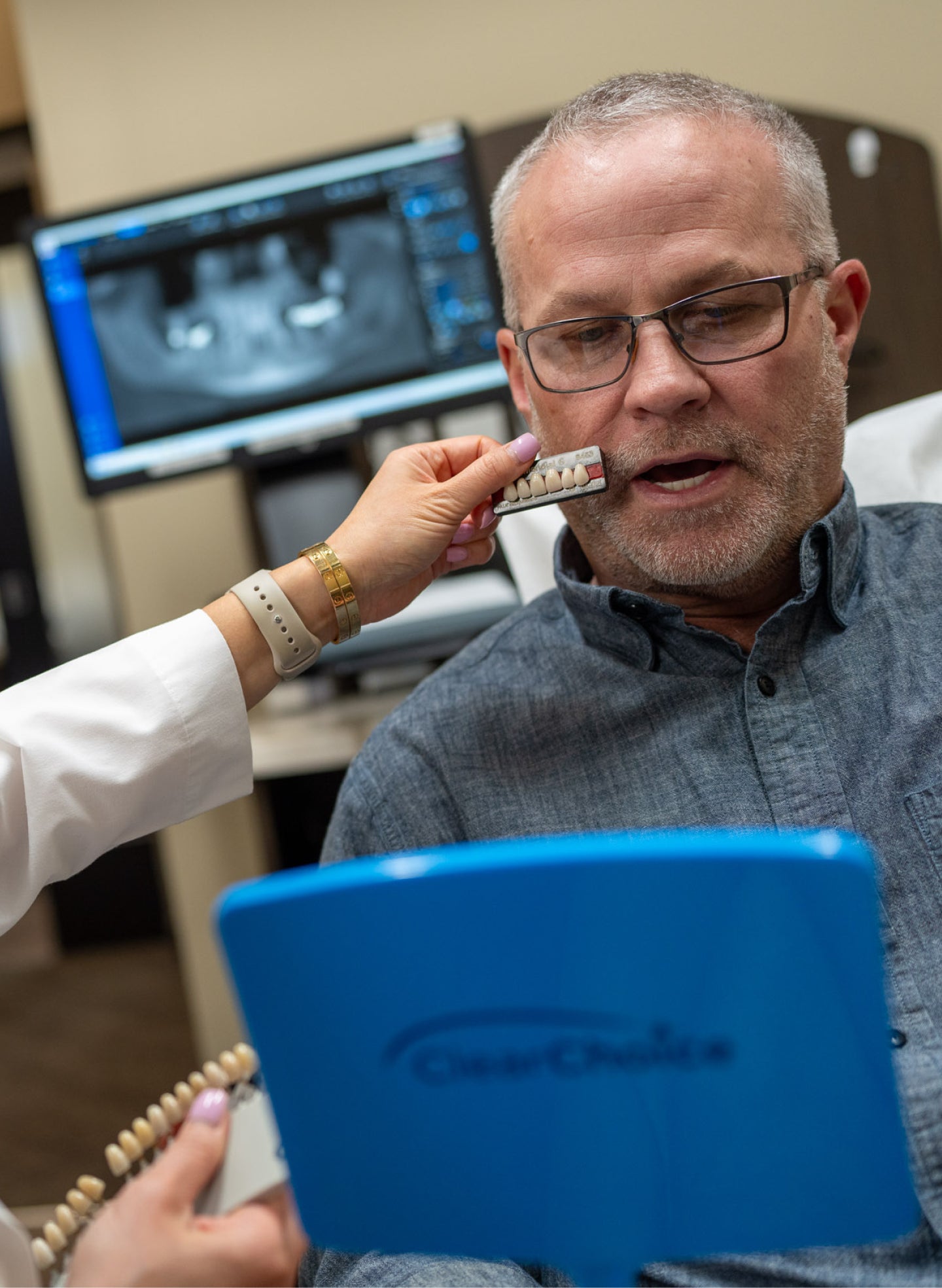Dental implants: abutment role, types, and uses
A dental abutment connects an implant to a crown. ClearChoice explains its role, types, and uses in implant procedures.

Dental implants are often a smart solution for one or multiple missing teeth. When a dentist inserts them, there’s a connector that acts as a base for the restoration, such as a crown or bridge. This is called an abutment and plays an important role in the procedure.
Below, we’ll take a closer look at dental implant abutments and how they work as well as the different types of abutments available. If you’re interested in dental implant treatment, schedule a free consultation at your local ClearChoice Dental Implant Center today.
How dental implants work
Dental implants are a safe, effective tooth replacement solution that require a dentist to surgically place titanium posts into your jawbone to serve as tooth roots. Then, a crown is attached to the implant. Not only do dental implants look and feel like real teeth, but they can last a lifetime with proper care and maintenance and also help you reduce the risk of issues such as cavities and jawbone deterioration. As long as you’re a good candidate for implants, they may restore your ability to speak, chew, and bring more confidence into every aspect of your life.
What is a dental abutment?
A dental implant abutment is a small component or connector that a dentist screws into a dental implant fixture. It’s designed to provide a stable base for the restoration, allowing for exceptional durability and long-lasting results. While some dentists place abutments during the actual dental implant procedure, others wait until after you’ve completed the healing process.
Types of dental implant abutments
There are several dental implant abutments available to accommodate various patient needs and preferences, including:
Standard abutments
Offered in different shapes and sizes to fit dental implants, standard abutments are pre-manufactured and readily available. These devices are a cost-effective option and may make sense if the position and angle of your dental implant are near ideal.
Custom abutments
Customs abutments are designed to provide a more ideally designed base to support the restoration. They are custom-made for your mouth and the implant site.
Healing abutments
Also referred to as healing caps, healing abutments help promote proper tissue healing after dental implant surgery when required. Once you’re healed, a dentist will replace a healing abutment with a permanent abutment.
Angled abutments
With angled abutments, the dentist is able to promote optimal alignment between different implants in the same jaw. They are frequently used in the context of full-arch dental implants.
How to maintain good oral hygiene with dental implants and abutments
In order to maintain your dental implants and abutments, it’s important to follow these tips:
Commit to daily oral hygiene: Brush your teeth at least twice a day with a soft-bristled toothbrush and use an antimicrobial mouthwash to reduce the risk of bacteria build-up around the abutment. Also, don’t forget to floss at least once daily.
Visit the dentist often: Through routine check-ups, you can help your abutment and implant stay in good shape. A dentist can catch and address potential issues early on before they become more complicated and expensive to resolve.
Don’t smoke: Smoking can take a toll on your healing process. If you smoke, it may be in your best interest to stop before and after your dental implant surgery. By doing so, you can maintain the long-term stability of the devices and improve your overall health.
Learn more about dental implants
Dental implant abutments are an essential component of the dental implant process as they impact the function and longevity of implants. If you’re missing teeth and looking for the ideal solution, dental implants at ClearChoice should be on your radar. We work with third-party financing vendors that can help make the cost of implants more manageable, and encourage you to visit your local ClearChoice Dental Implant Center for further information.
Dental implant abutment FAQs
How painful is a dental implant abutment?
In most cases, placing a dental implant abutment causes minor discomfort.
What is the difference between a dental crown and an abutment?
A dental crown is a restoration designed to replace a missing tooth. An abutment, on the other hand, is a small connector that attaches a crown to a dental implant.
Can a dental abutment fall out?
Although it’s uncommon, a dental implant abutment may become loose. If an abutment should get loose or fall out, you should contact your dentist immediately so they can reinsert and retighten it.
Can you chew on a healing abutment?
No, you shouldn’t chew on a healing abutment. By doing so, you can destabilize it and potentially cause it to fall out.
